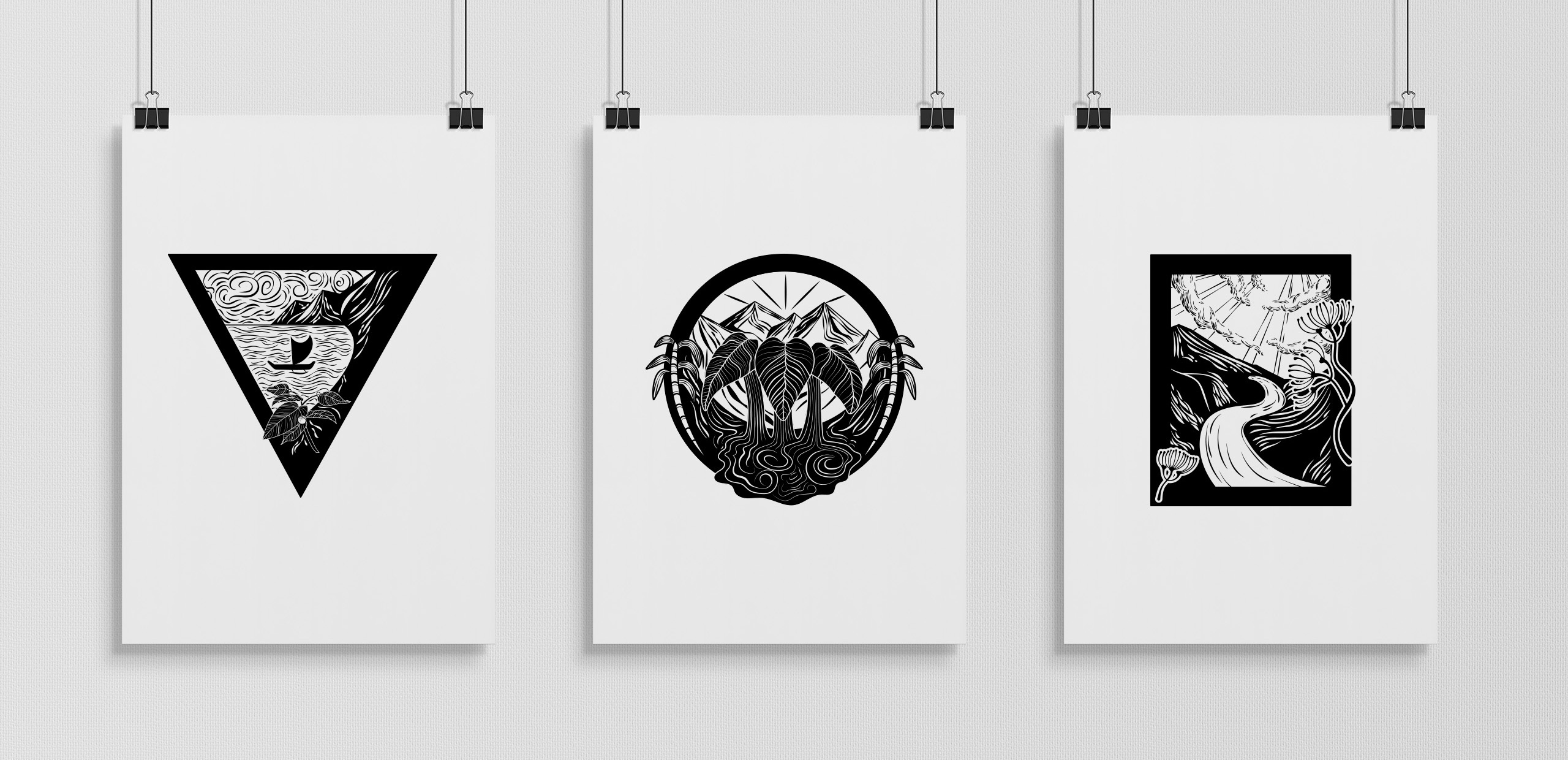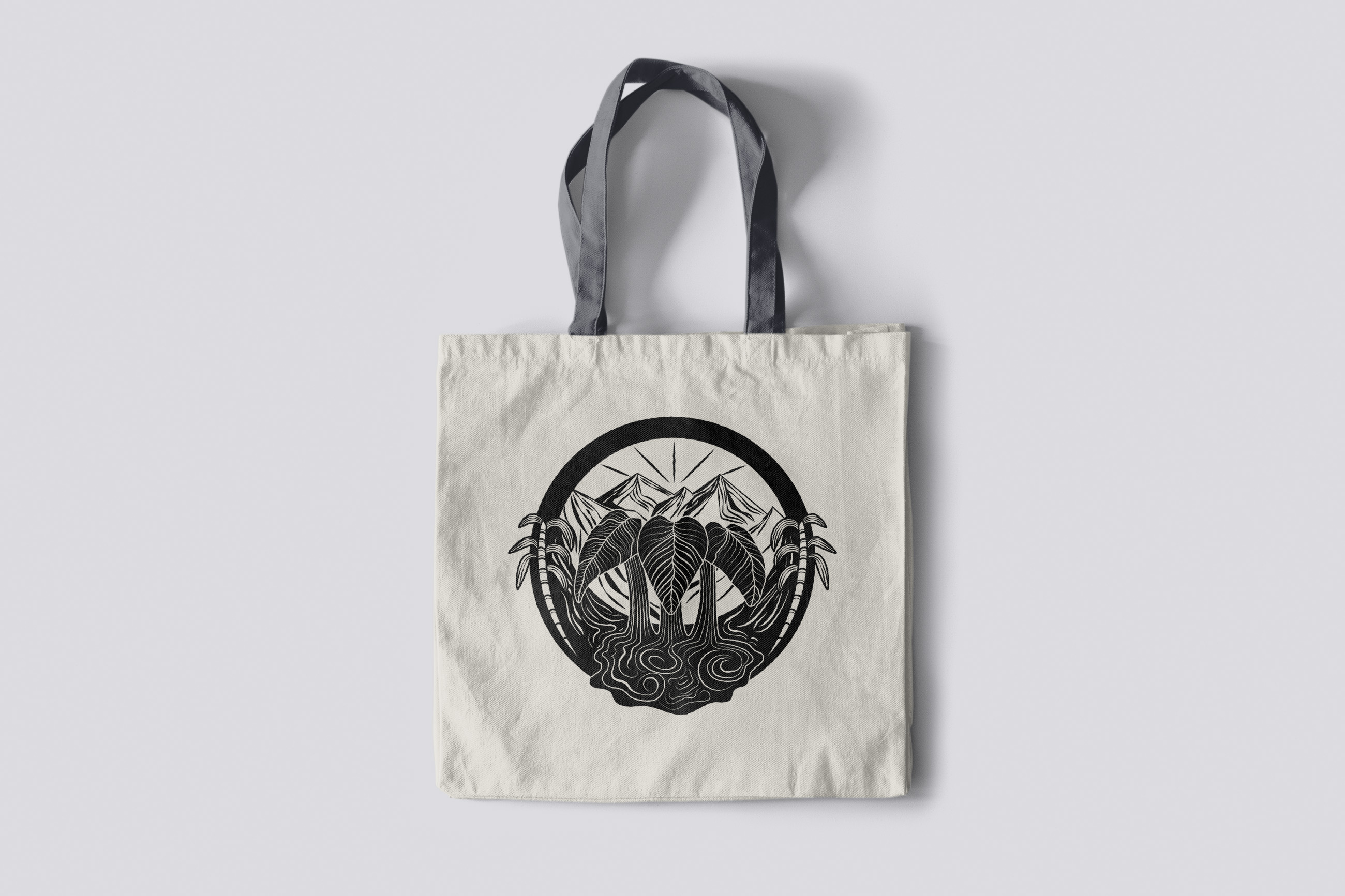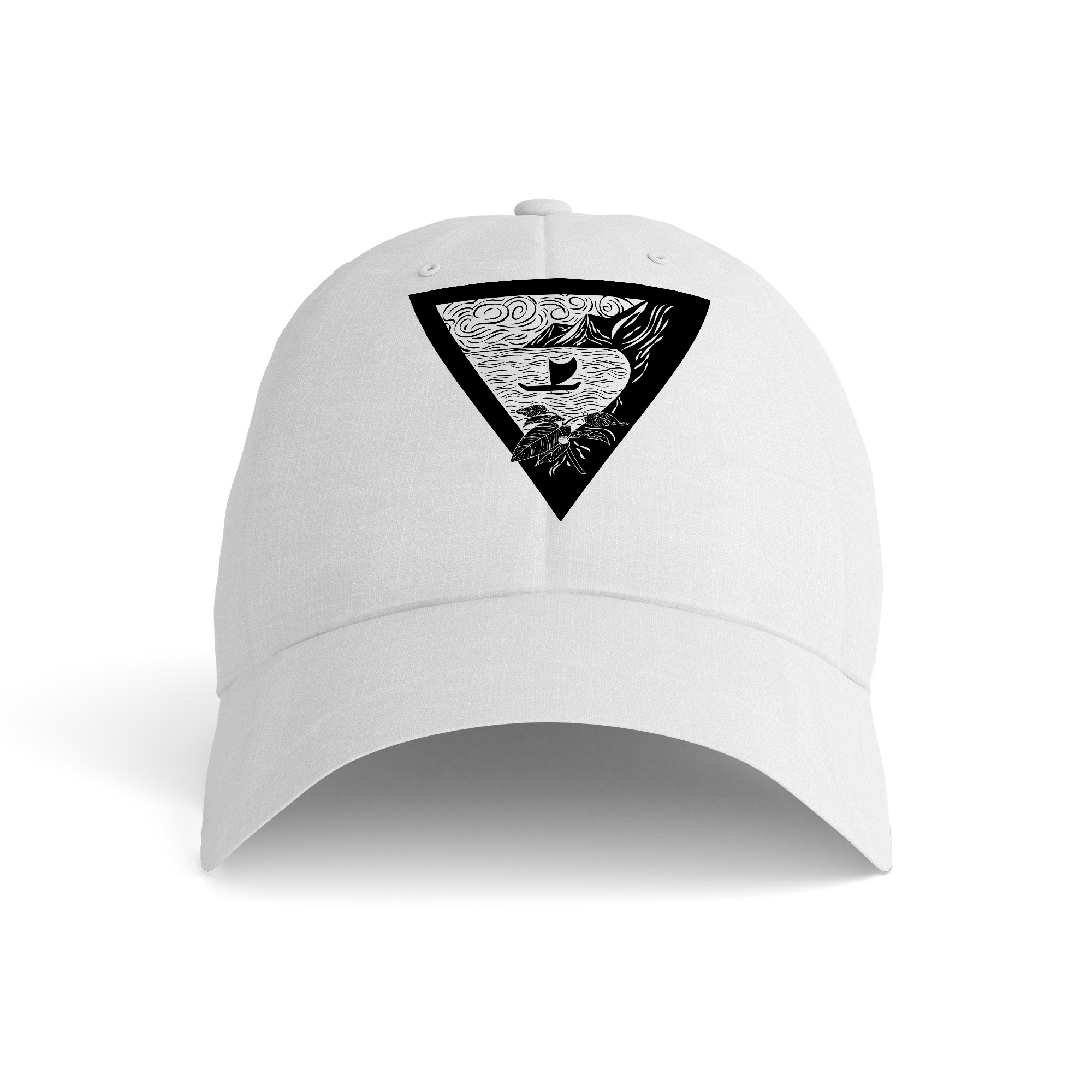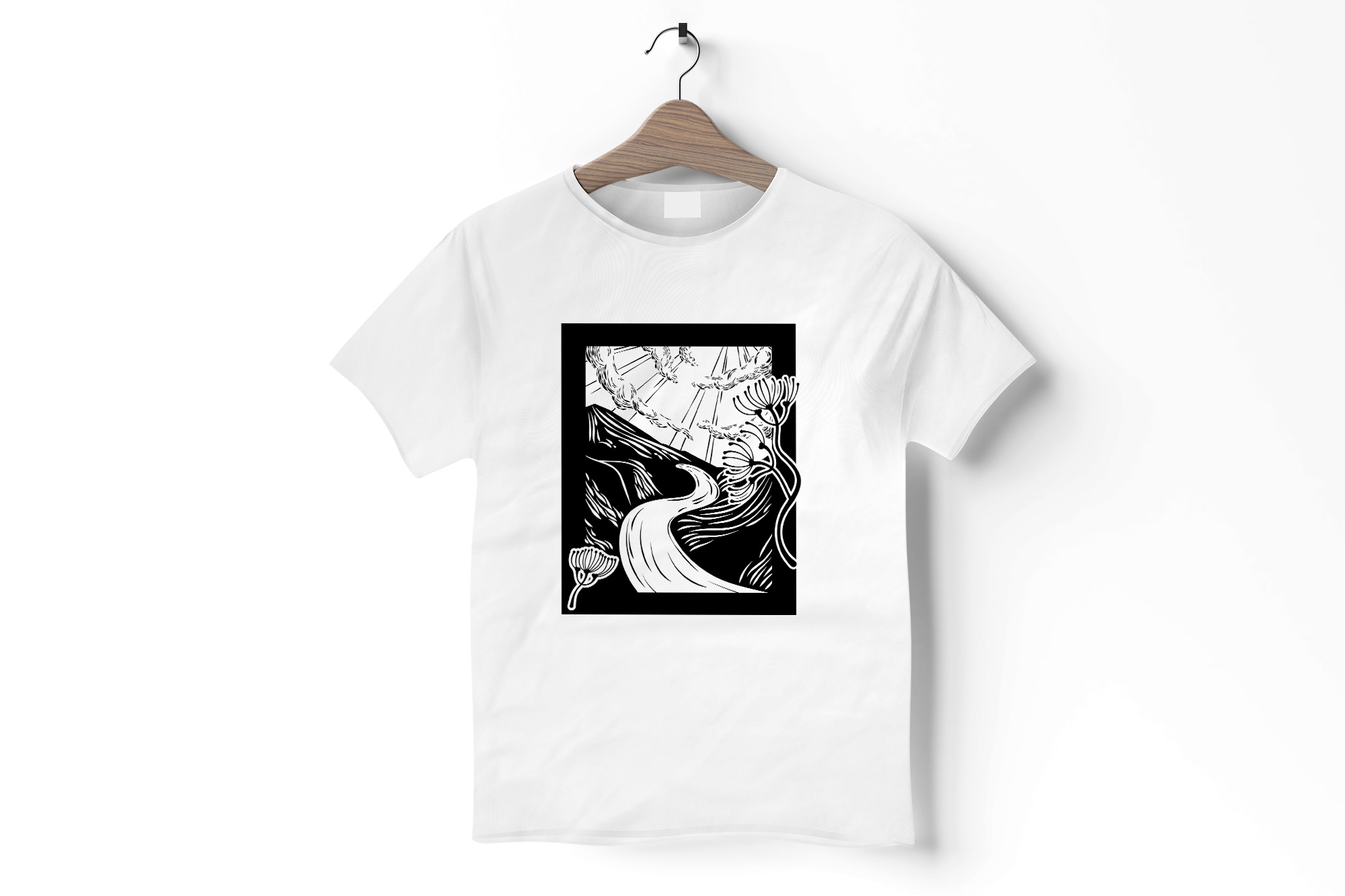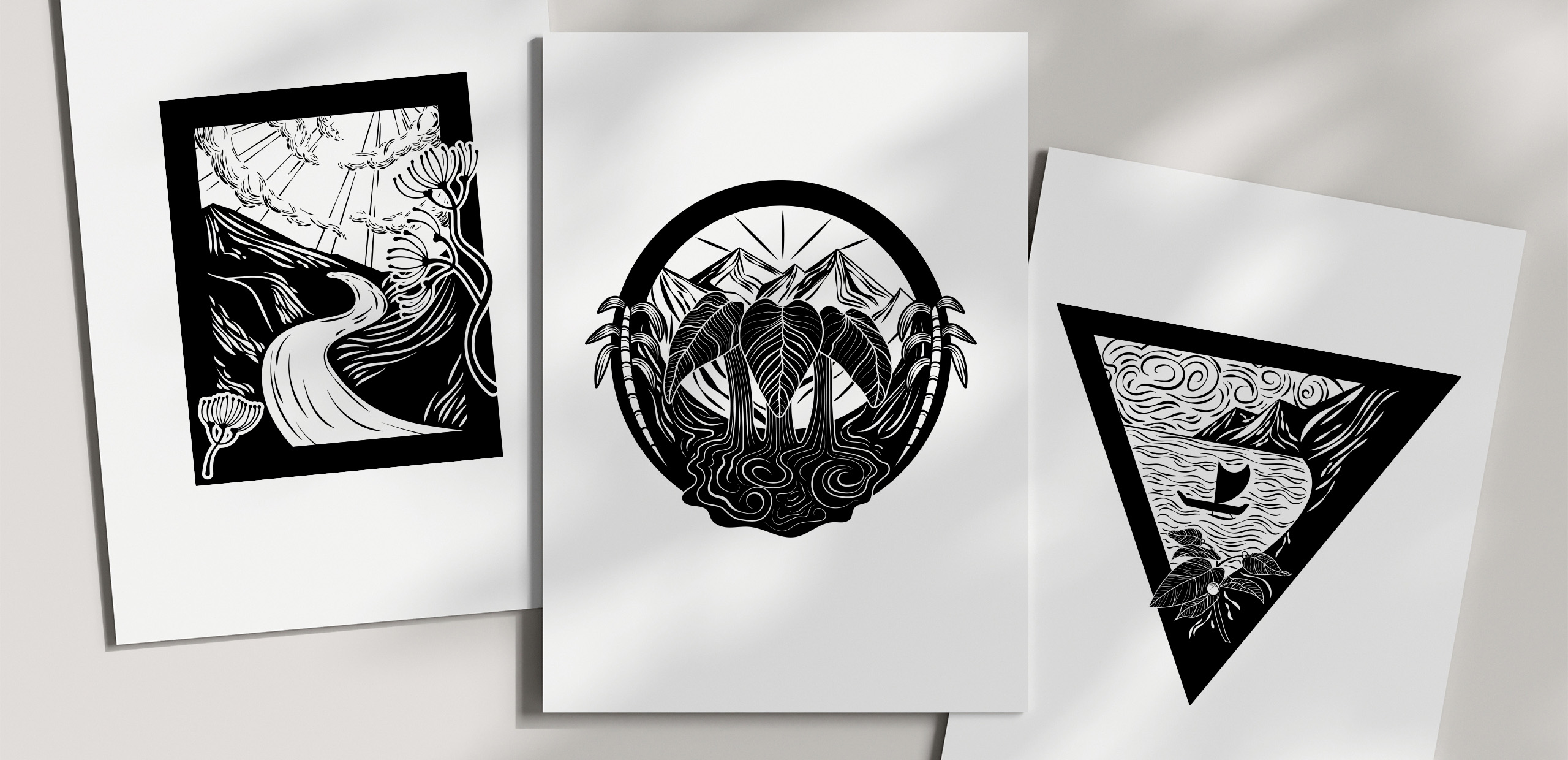
Halawa Kohala
Halawa, Kohala is located on the island of Hawaii. My ancestors inherited this beautiful ahupua’a and I wanted to create equally beautiful emblems to represent them. There are three sets of designs created to represent three powerful men of Halawa, three powerful women of Halawa, and Kaihe a Konohiki.
- Services: Illustration
- Software: Adobe Illustrator
Sketching
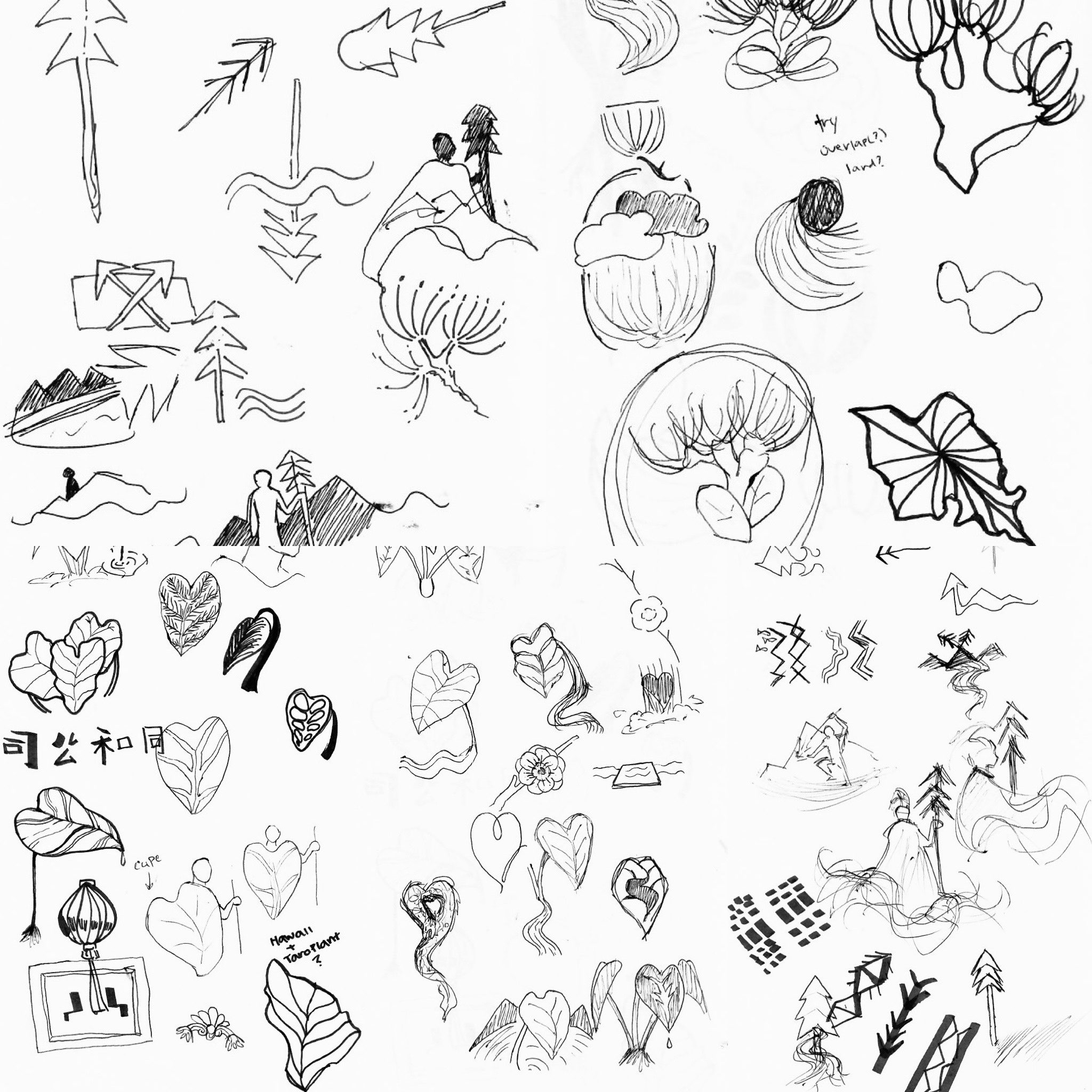
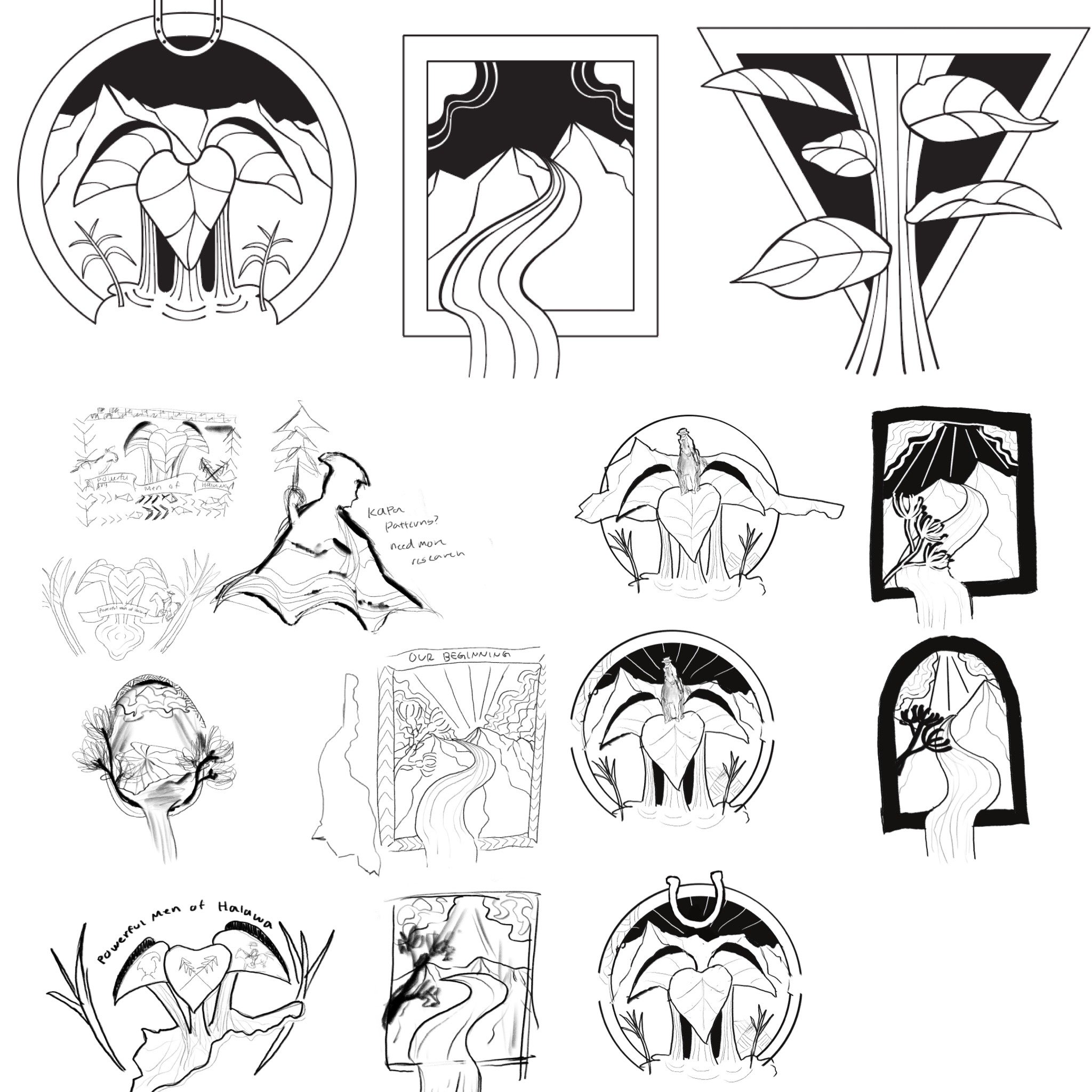
Research began for my Hawaiian ancestry and I read through a book my father made for our family, "Legacy of a Konohiki". I also talked to both my father and my grandma who knew more about our ancestry. After my research, I started to sketch out some ideas for the design. One of the challenges was to make the design look organic and natural through Illustrator. I was later inspired by my professor about the woodcut or linocut art style and tried to make something similar to it.
Finalized Design
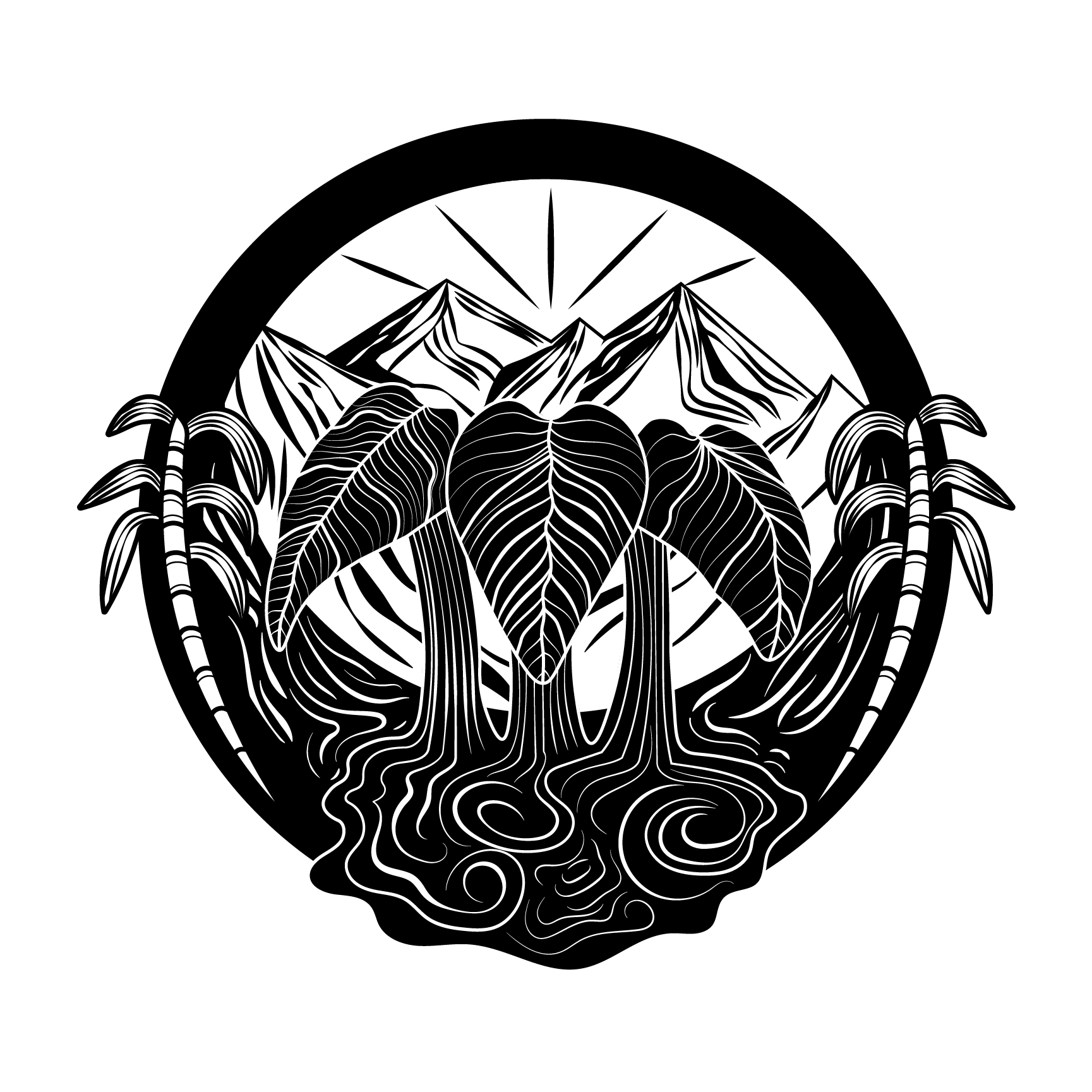
Powerful Men of Halawa
The three taro plants were chosen to represent three of my ancestors; Kaihe, Paul Kahea, and Akiona. Akiona had also worked as a taro planter. The two sugar canes around the emblem were represented when Paul Kahea leased and/or sold land to James Wight for his sugar cane plantation. The scenery of the land and ocean is to show that Kaihe and Paul Kahea are watching over it as Konohikis. The three stems of the taro plants represented the rivers north of the Kohala area. These rivers helped the warriors and families living there to have clean water and food. The swirling waters branching away from the rivers can be seen as the roots of the taro plant and the roots of the family tree expanding. The water can also represent how the three of them were baptized.
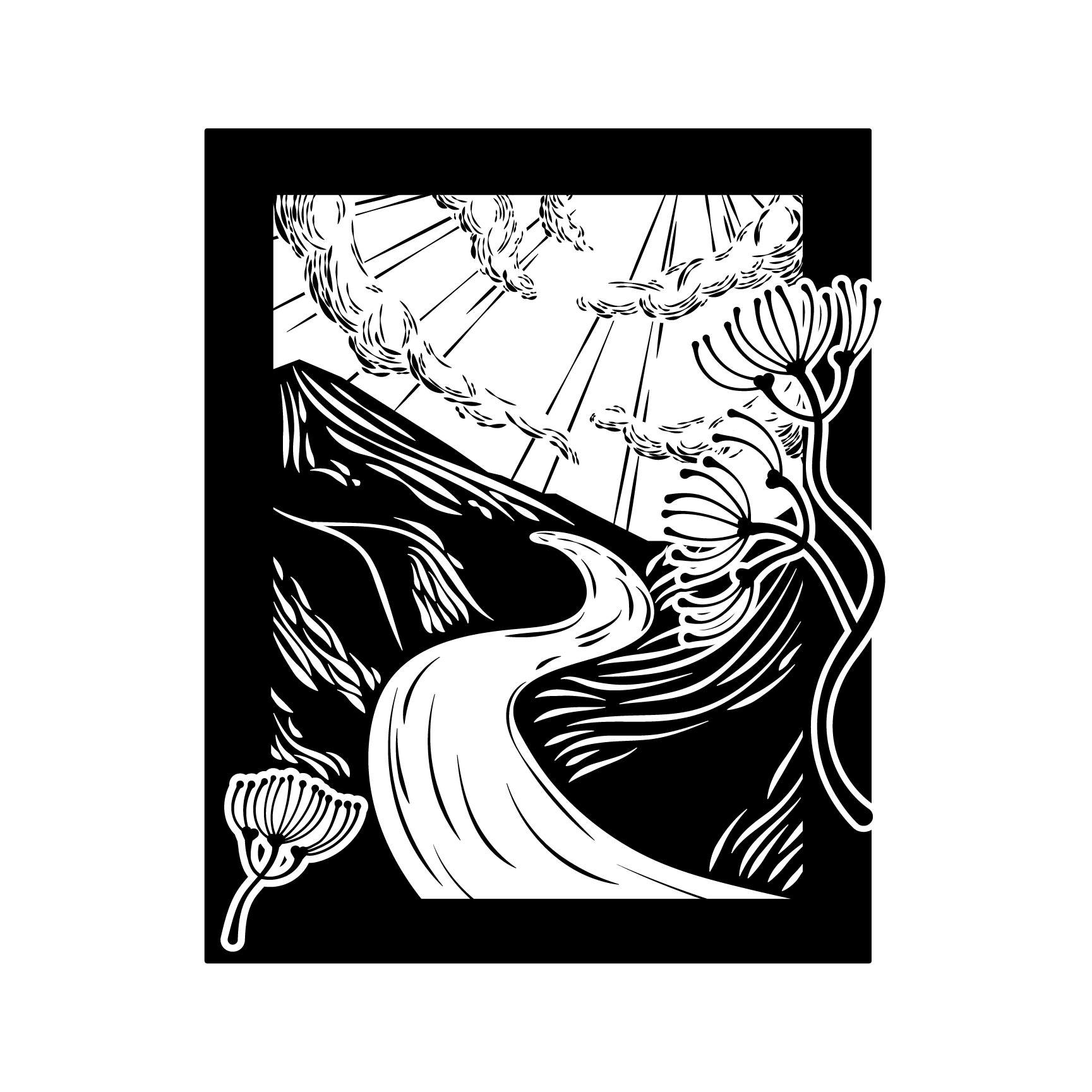
Powerful Women of Halawa
The ‘Ōhi‘a lehua flowers were used to represent the three powerful women of Halawa; Kalama, Nakoʻokoʻo, and Ualani. All three of them were a Konohiki and managed the land, watching over it. The scenery in this emblem is Halawa Kohala and one of its rivers running through the land. Ualani was also born and buried in Halawa and her gravestone was found in the Tong Wo Society. The sky was made to look like “heavenly rain” to represent Ualani’s name. The valleys around the river were to represent how Kalama and Nakoʻokoʻo acquired land after giving their testimonies during the Great Mahele.
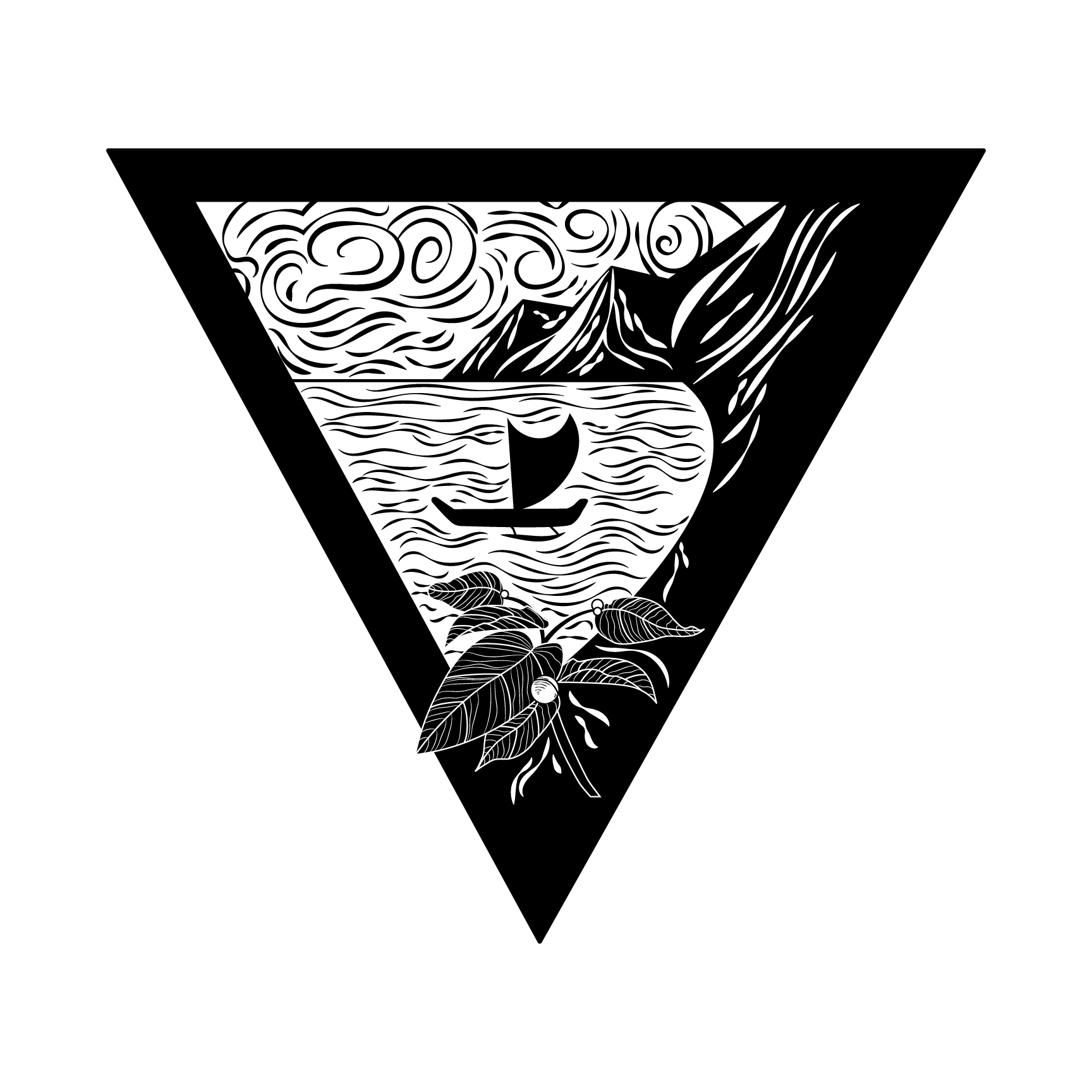
Kaihe The Casting Spear
Kaihe’s name means casting spear, hence the triangular frame for his emblem as if to depict the tip of a spear. The plant on the bottom is the Kauila plant. Its wood was often used to create spears, javelins, daggers, kapa beaters, etc. The canoe was to show how Kaihe would often travel between the different islands while following Kamehameha I. He was also a Konohiki and watched over some land in Maui, Oahu, and Hawaii.
